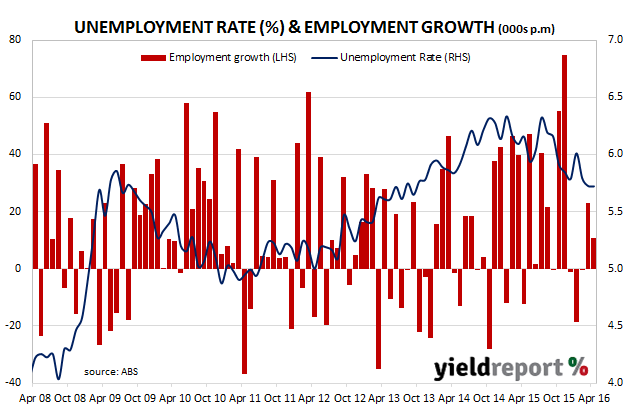Australia’s job market has rebounded in April, creating 10,800 new jobs in net terms. The figures were not far from the expectation of 12,000 new jobs but the composition of the increase may not please everyone; part-time jobs increased by 20,200 while full time positions fell by 9,300. Another concerning figure is the fall in hours worked. Monthly hours worked in all jobs decreased 17.9 million hours to 1,613.8 million hours. The growth in employment and a fall in the participation rate from 64.9% to 64.8% kept the seasonally-adjusted unemployment rate steady at 5.7% instead of moving to 5.8% as economists had generally expected.
The numbers were greeted by markets in a fairly neutral manner. ANZ pointed out “momentum has slowed” and said it expected unemployment to remain near 5.7% for the rest of the year. CBA also noted the drop off in momentum, describing the jobs data as “soft, but not disastrous” and said this and a poor March GDP figure would add pressure on the RBA to cut rates in June. Australian 10 year bond yields rose 5bps to 2.30% while the AUD rose initially against the USD before settling back.

Here’s what the economists thought:
Shane Oliver, AMP Capital: “[It is] hard to get excited…soft beneath the surface.”
National Australia Bank senior economist Tapas Strickland: “It could also indicate under-utilised labour and could help explain why the recent falls in the unemployment rate are yet to translate through to a pick-up in wages growth.”
JP Morgan senior economist Ben Jarman: “There appears to be some dialling back of hours for existing workers too.”
Westpac senior economist Justin Smirk: “This highlights the big shift in employment growth from the previously booming resources sectors to the more modestly growing services sectors, as these sectors have a much higher proportion of female and part-time workers.”

